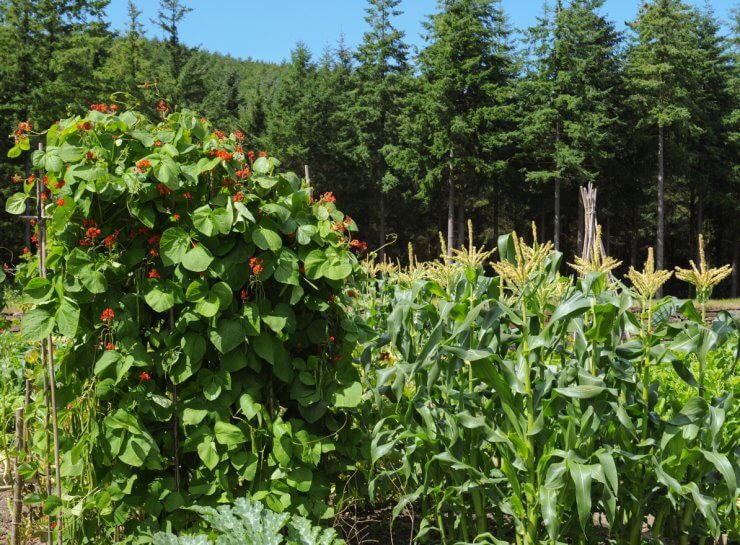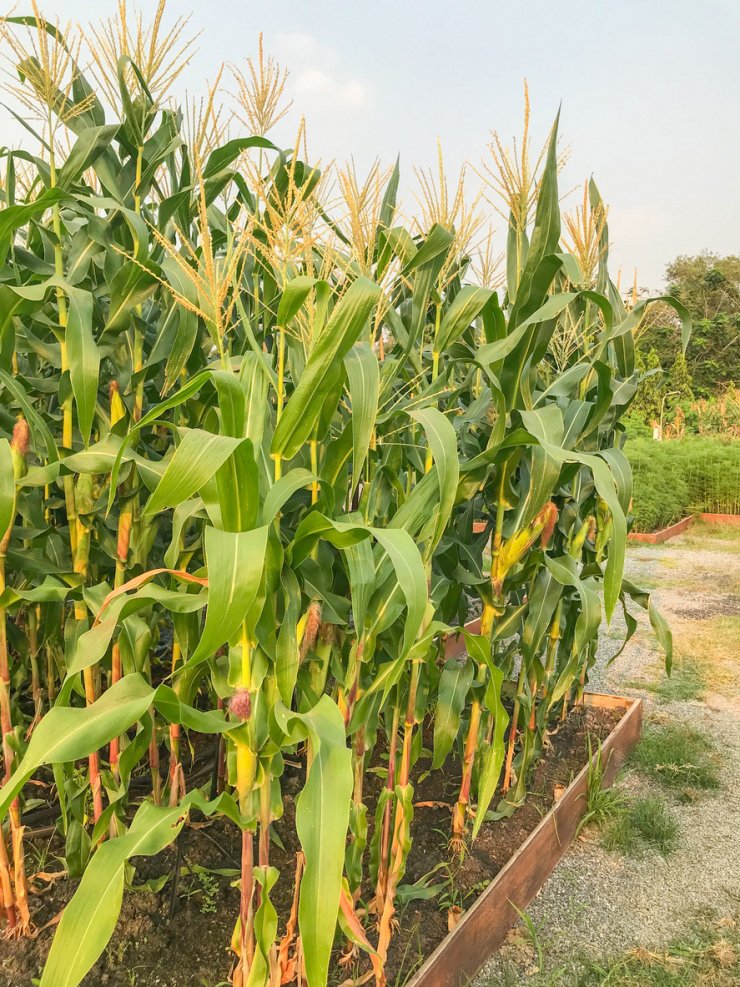
Growing corn next to other plants in the garden
When first planning your corn garden, you should consider the type of land you can tend. If you have a large outside plot of land with the right soil and the right conditions for watering and draining, you might have the ideal situation for planting directly in the ground. If, however, your soil is too sandy or not the right composition, you might want to consider planting in raised beds. Because sweet corn depends on a lot of plants for pollination and yield, containers aren’t usually suitable for sweet corn. But don’t despair! Some ornamental corn varieties make attractive and interesting container plants for your patio.
Growing Corn in Raised Beds

Corn in raised bed
Creating raised beds for your corn garden can be a lot of work the first time you set up your beds. But, having raised beds allows you more control over your growing environment and they’re a good choice for planting corn. You’ll discover that watering, irrigation, weeding, and even harvesting are much easier—with items closer to your reach and contained in a space that is more manageable than growing in open land. Once you create your raised beds the first time, subsequent years will be easier.
A large raised bed that’s at least 6 feet long and 4 feet wide provides enough room to grow one block of corn. You can fit enough corn in a box of this size to produce about 60 ears. If you want to produce more corn, build more raised beds. Smaller raised beds are easier to maintain, and you won’t have to walk across the soil as much to pollinate and tend to the plot.
To create nicely contained raised beds for your corn, enclose your raised beds with wooden sides at least 8 inches wide—this helps keep the bed together, will be tall enough, and will make irrigation easier, too. With raised beds, your garden is less likely to contain the seeds of weeds that are often found in garden soil, so you’ll minimize the incidence of weeds overall, which will save you time and effort later. Weeding itself is so much easier with raised beds, because you don’t have to get down so far on the ground to remove the weeds.
- Annual Tip: To optimize the soil in your raised beds, be sure to amend your soil with composting at least once a year—otherwise, your soil can become less productive for your plants.
Where have you planted your corn? What challenges have you faced about planning where to plant your corn? Have you tried growing your corn in raised beds? Please share your experiences here by commenting below.


 Previous
Previous

